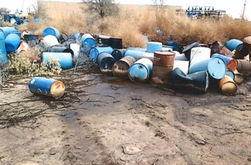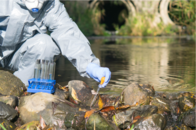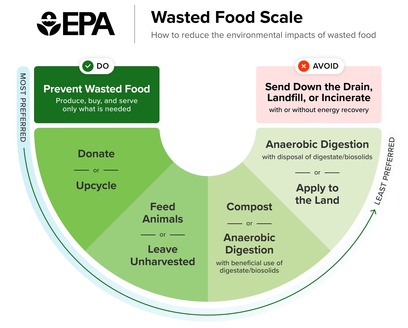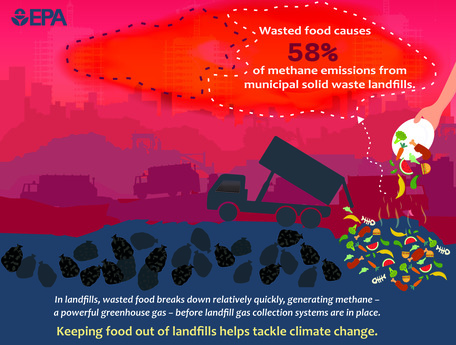| |
|
October 19, 2023
This e-newsletter delivers announcements from EPA's Office of Resource Conservation and Recovery on rulemakings, guidance documents, reports, research, upcoming webinars, and more.
|
|
On October 19, 2023, EPA proposed recycling alternative standards regulations under the American Innovation and Manufacturing Act of 2020. The proposed alternative recycling criteria are for ignitable used refrigerants, including some hydrofluorocarbons and their equivalents under Resource Conservation and Recovery Act authority.
These proposed alternatives largely defer to existing Clean Air Act standards for refrigerant recovery equipment and reclaimer certification, but also include a prohibition on speculative accumulation and requirements for emergency preparedness and response for refrigerant reclaimers. These proposed changes to the hazardous waste regulations aim to decrease emissions and support safe recycling of used refrigerants. For more information, visit our website.

|
|
Draft Memorandum about Integrating Climate Change Adaptation Considerations into the Resource Conservation and Recovery Act Corrective Action Process
On October 18, 2023, EPA issued a draft memorandum with recommendations on how to work with RCRA facility owners and operators to integrate climate change adaptation considerations into the RCRA corrective action process. This integration will help protect human health and the environment by ensuring that RCRA corrective action cleanups remain effective and prevent the migration of hazardous waste or constituents. EPA welcomes comments on the memorandum through November 17, 2023. Read and comment on the draft memorandum.
|
|

On October 18, 2023, EPA finalized denial of a rulemaking petition from the American Forest and Paper Association and four other industry association petitioners requesting amendments to the Non-Hazardous Secondary Materials regulations. EPA is finalizing denial of all three requested amendments to ensure these materials are only combusted in units that are appropriately designed to burn them.
In addition to denying this rulemaking petition, EPA is changing the definition of paper recycling residuals to set a minimum heat value that the residuals must meet to be considered non-waste fuel. This performance-based threshold will reduce regulatory uncertainty and ensure residuals burned as non-waste fuel are being legitimately and beneficially used and not simply being discarded through combustion. Find out more on our petition response webpage.
|
|
|

On November 1, 2023, EPA will host a virtual meeting to discuss the issues surrounding the management of used industrial containers and the reconditioning of these containers. The reconditioning and recycling processes provide important economic and environmental advantages because they consume less energy and fewer resources to meet the demand for industrial containers. If not done in an environmentally safe manner, these processes can negatively impact the surrounding communities.
|
|
|
EPA Hosts Webinar on the Polychlorinated Biphenyls Final Rule

On November 9, 2023, EPA will host a webinar about the final rulemaking “Alternate PCB Extraction Methods and Amendments to PCB Cleanup and Disposal Regulations” from 1:30 - 3:00 pm Eastern time. In this rule, EPA finalized regulatory changes that address several key issues related to implementing the PCB Cleanup and Disposal Program under the Toxic Substances Control Act. Register for this webinar.
|
|
|
|
To strengthen tribal capacity building and develop sustainable management of waste programs, EPA facilitates the National Tribal Waste Management Peer Matching Program. Peer matches are voluntary, structured opportunities for tribes and Alaska Native Villages who are working on similar waste management issues to exchange experiences and practical knowledge through a mentoring program.
Join this webinar on November 9 to learn about the Peer Matching Program, the experiences of tribes who recently participated in the program, and potential opportunities for you to participate in the future.
|
|
|
Today, the U.S. EPA released two new reports quantifying methane emissions from landfilled food waste and updating recommendations for managing wasted food. Over one-third of the food produced in the United States is never eaten, wasting the resources used to produce, transport, process, and distribute it – and much of it is sent to landfills, where it breaks down and generates methane, a powerful greenhouse gas.
Based on these findings, the report presents a new Wasted Food Scale, an EPA tool to help decisionmakers understand the best options for managing food waste in terms of environmental impacts. The release of the new Wasted Food Scale marks the first update of EPA’s previous Food Recovery Hierarchy since the 1990s, reflecting the latest science, more recent technological advances, and changes in operational practices. The new Wasted Food Scale raises the ranking of composting, and includes new pathways, such as the sewer/wastewater treatment pathway (aka sending food down the drain), which shares the lowest ranking with landfilling and incineration. EPA’s research confirms that preventing food from being wasted in the first place (i.e. source reduction), is still the most environmentally beneficial approach.
 |
The second report, “Quantifying Methane Emissions from Landfilled Food Waste,” presents EPA’s first ever published modeled estimates of annual methane emissions released into the atmosphere from landfilled food waste. EPA conducted an analysis to estimate annual methane emissions from landfilled food waste from 1990 to 2020. The agency found that while total emissions from MSW landfills are decreasing, methane emissions from landfilled food waste are increasing, and 58 percent of methane emissions released to the atmosphere from municipal solid waste landfills are from food waste. This data confirms that diverting food waste from landfills is an effective way to reduce emissions of methane, a powerful greenhouse gas, from municipal solid waste landfills.
 |
This collection of food waste research provides a better understanding of the net environmental footprint of U.S. food waste. The report findings highlight the need to prevent food waste and keep it out of landfills. Later this year, EPA will issue a draft national strategy for public comment that outlines the actions EPA will take to do exactly that.
|
|
|
The purpose of this newsletter is to provide interested parties with updates about the federal solid and hazardous waste programs, such as information about rulemakings, upcoming webinars, guidance documents, open comment periods, and other related communications.
|
|
|
|
|